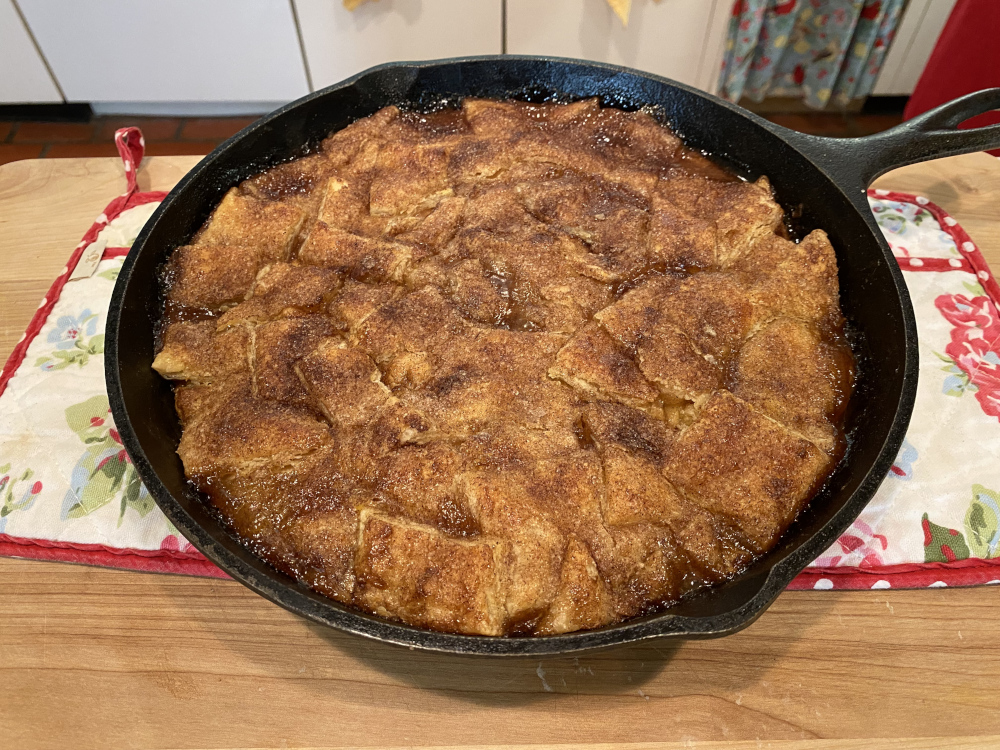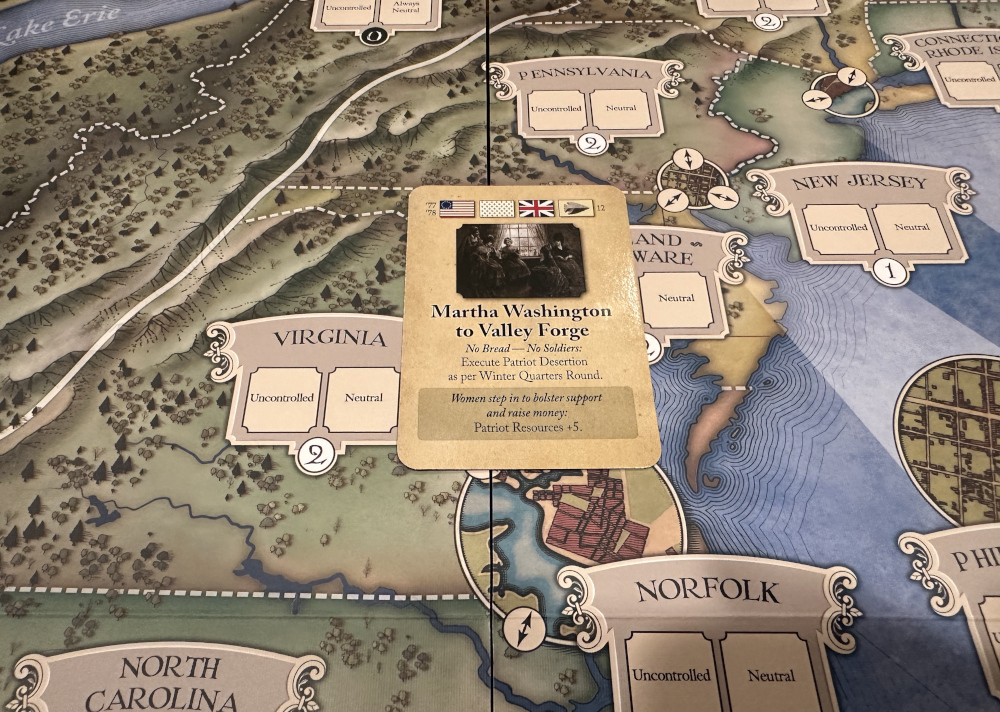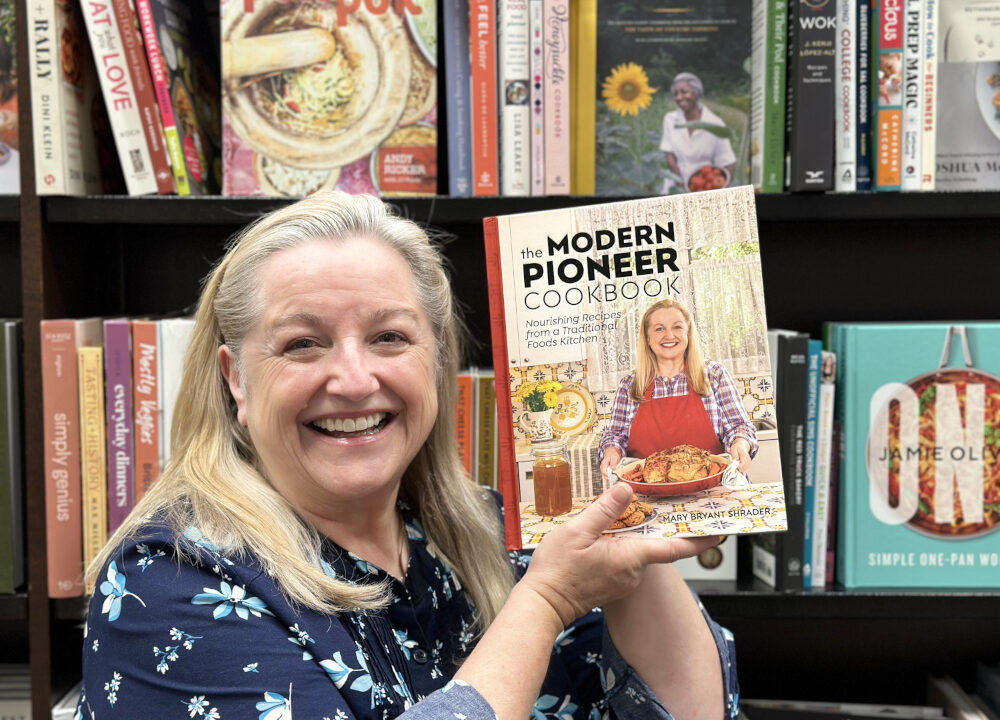This post is by Mary Bryant Shrader. Mary teaches how to make traditional foods, including bone broth, sourdough, and ferments, on her Mary’s Nest website and YouTube channel, which includes over 600 videos. Her YouTube channel has over a million subscribers and 57 million views. She is also the author of the bestselling The Modern Pioneer Cookbook, published by Penguin Random House. Learn more at marysnest.com.
Although I only occasionally play historical and strategy games, I like to think of myself as supporting those who do, especially my husband, son, and their gaming friends, by making meals that will sustain them through their tabletop campaigns. And when I do play historical games with them, I especially enjoy learning about the history behind the game through the foods the people would have eaten during that time.
My family had the wonderful opportunity to attend the SDHistCon East 2023 convention at the U.S. Naval War College Museum in Newport, Rhode Island. Our thanks to game designer Harold Buchanan, museum curator Rob Doane, editor Andrew Bucholtz, and their outstanding team for organizing such a memorable and fun convention.
I grew up in New York and was familiar with the colonial history of the area where I lived and the nearby states in New England. My mom and I frequently visited John Jay’s house, which was not far from where I grew up. My family regularly took road trips to Boston to see Paul Revere’s home and other colonial sites. We dined at many a tavern or restaurant that boasted “George Washington was here.” With all the places General Washington ate or slept at, we were lucky he had enough time to lead his troops on the battlefield!
During the convention, my husband and son played several historical games, including Mark Miklos’ The Battle of Rhode Island, part of the Battles of the American Revolution series from GMT Games. While they led their Colonial or British troops on mounted maps, I enjoyed learning more about the area’s history, especially the food and life of 1778, when the battle of Rhode Island took place. In between gaming, we enjoyed going on historical tours of the American Revolution battlefield sites and the USS Massachusetts in Battleship Cove. A big storm kept us below decks of the battleship for a time, but we were blessed with good weather while touring the Butts Hill Fort and the nearby battlefield.

Ben Shrader, Harold Buchanan, Ted Shrader, and Mary Bryant Shrader (L to R) at Butts Hill Fort during SDHistCon East 2023.
I like learning about and making the foods from colonial times, such as an Apple Pandowdy, First Lady Abigail Adams’s favorite dessert. She was the wife of John Adams, who was a leader during the Revolutionary War and later became the second President of the United States. Apple Pandowdy is a delicious dessert recipe that is very easy for beginning cooks to make since you can make the crust by laying out pieces of dough over an apple mixture. After just a few hours of making and baking this dish in the kitchen, you’ll be transported back in time to enjoy this historical dessert.

An Apple Pandowdy, from Mary Bryant Shrader. (marysnest.com.)
I also see food mentioned in the historical games my family plays. In Harold’s Liberty or Death, food is critical to the colonial soldiers wintering in Valley Forge. The “Martha Washington to Valley Forge” event card brings essential supplies to Washington’s troops, from clothes to food. Her husband, George Washington, feared for his troops’ morale and health when they chanted, “No bread, no meat, no soldiers!”

The “Martha Washington to Valley Forge” event card from “Liberty or Death.”
One of Martha Washington’s favorite cookbooks was “The Art of Cookery, Made Plain and Easy” by Hannah Glasse. The book was first published in 1747 and provides a wide range of recipes, from making broths to pickling and more. Glasse’s cookbook provides recipes for making different types of bread pudding, including fine, ordinary, and baked puddings. The differences between these three types of bread pudding have been lost in making modern-day bread pudding. But during the 18th century, they did have significance.
Fine bread pudding was a boiled pudding instead of a baked pudding. Home cooks usually made it using stale bread slices, eggs, milk, butter, and sugar. For additional flavoring, the home cooks might also add cinnamon, vanilla, and a bit of crushed almonds and orange flavoring, depending on what was on hand.
Ordinary bread pudding was also a boiled pudding but was made simply with cubed stale bread, milk, eggs, and sugar. Sometimes, discriminating cooks would add a bit of ginger for flavor.
Baked bread pudding is much more similar to what we think of today when we hear the term bread pudding. Although the modern home cook has a lot of flexibility as to what type of bread to use to make a bread pudding, in the 1700s, it was made with cubes of bread (not stale) from what was called a penny loaf. (Its name came from the fact that, at one time, these loaves cost one penny.) These penny loaves of bread looked like what we would call today a bun or a dinner roll. They were soft and tasty!
Home cooks of the era would tear the penny loaves into pieces and cover them with an egg and milk mixture along with some ginger, cinnamon, and dried fruit, usually raisins. They baked it in the oven before topping it with a vanilla sauce. Today, bread puddings are usually baked in the oven as opposed to boiled, but home cooks have the option of using fresh or stale bread. Stale bread is a superb option as it is excellent at absorbing the egg mixture and uses scraps that might have otherwise been discarded.
In my book, The Modern Pioneer Cookbook, I provide a recipe for an Easy Sourdough Bread Pudding with Dried Fruit. This recipe is similar to a baked bread pudding of the eighteenth century. My mom always encouraged me to use all the food we had in our kitchen, including the scraps, to create a no-waste kitchen. She taught me how to use bread scraps to make bread pudding, and all the eggs in the recipe gave the dish protein, so it was much more than just a sweet dessert. Bread pudding was also a favorite of Thomas Jefferson, who was a famous Revolutionary War leader, author of the Declaration of Independence, and third president of the United States.

Mary Bryant Shrader with a jar of bone broth.
If you’re a fan of historical games, I encourage you to look for opportunities to immerse yourself in the time period of the game by learning more about the foods enjoyed by the people of that era. And if you’re playing any of the American Revolution War historical games by Mark S. Miklos, Harold Buchanan, and other designers, you have a rich colonial culinary history to discover, make, and enjoy!
Learn more about Mary, her cookbook, and her YouTube channel at marysnest.com
